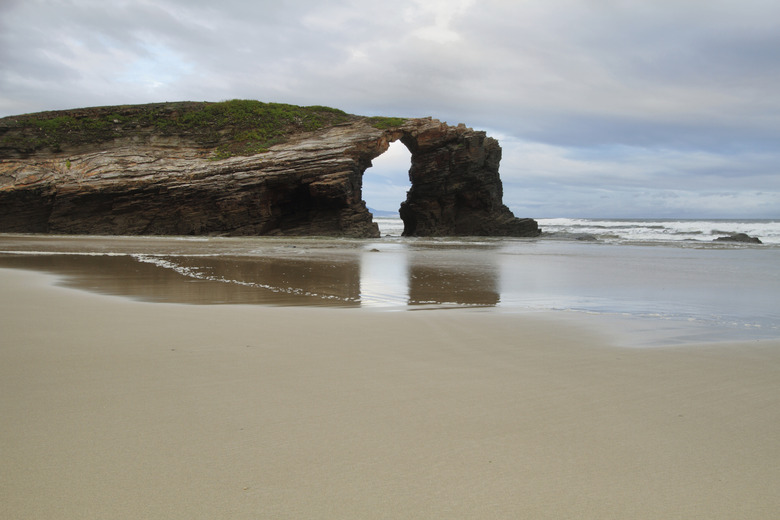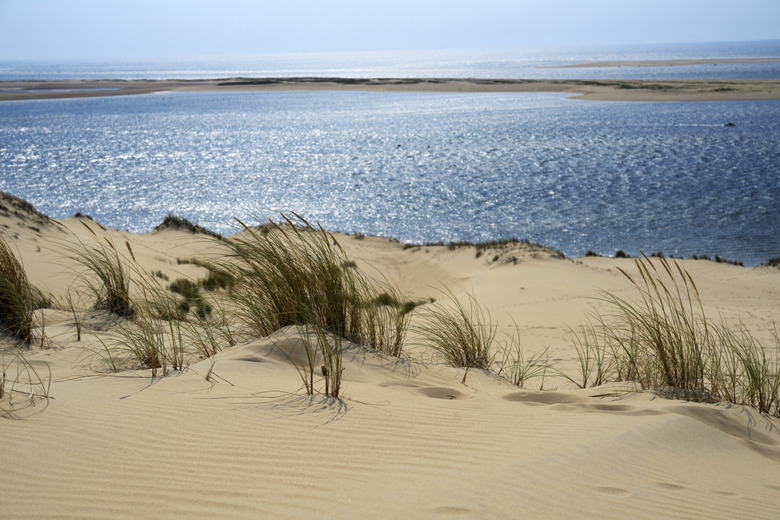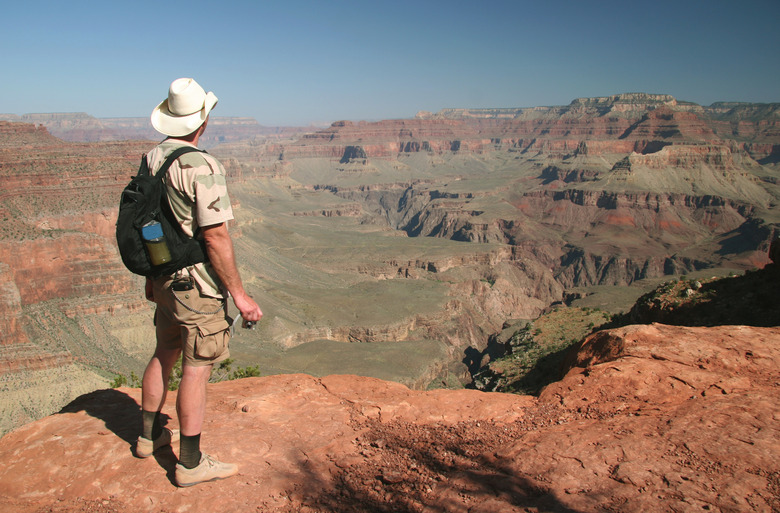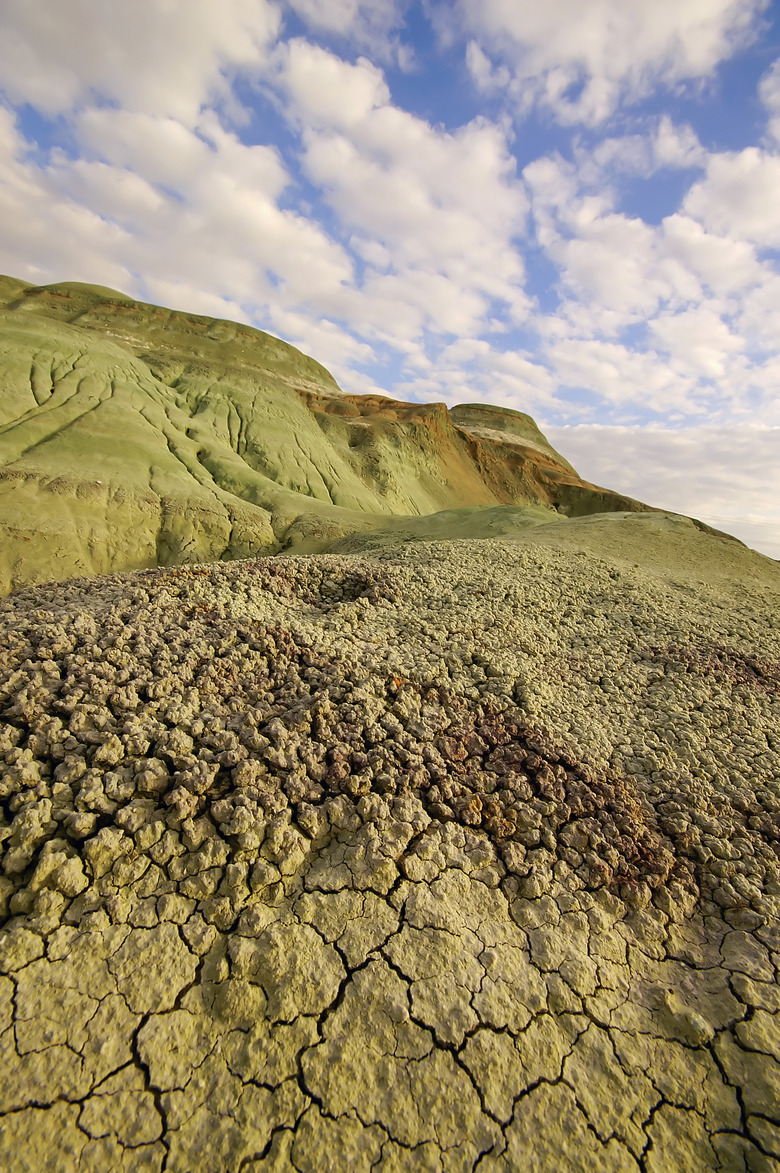How Does Erosion Affect Landforms?
Erosion is the process of land, soil or rock being gradually worn away by natural elements, such as water or wind. Landforms are natural features on the earth's surface that have distinct origin and shape. Landforms can be created and destroyed by erosion.
Creative force
Creative force
Landforms that are created by erosion are called fluvial erosion landforms. As water passes across land, it carries with it sediment and other forms of natural debris. Over time, the accumulation of this sediment and debris create deposits, which eventually become landforms. Examples of fluvial erosion landforms include sandbars, flood plains and levees.
Destructive power
Destructive power
The same creative force that builds landforms also destroys them. As water and wind pass across land, they take away grains of soil and wear down rock. Years of this process reduces the size of hills and mountains, and it cuts through ground to create valleys, canyons and ditches.
Landform grading system
Landform grading system
The Environmental Protection Agency (EPA) is one of many groups that monitor landform erosion activity. The EPA uses a grading system that measures and evaluates the evolution of land sloping.
Cite This Article
MLA
Sigust, Andrea. "How Does Erosion Affect Landforms?" sciencing.com, https://www.sciencing.com/erosion-affect-landforms-7642916/. 24 April 2017.
APA
Sigust, Andrea. (2017, April 24). How Does Erosion Affect Landforms?. sciencing.com. Retrieved from https://www.sciencing.com/erosion-affect-landforms-7642916/
Chicago
Sigust, Andrea. How Does Erosion Affect Landforms? last modified March 24, 2022. https://www.sciencing.com/erosion-affect-landforms-7642916/



